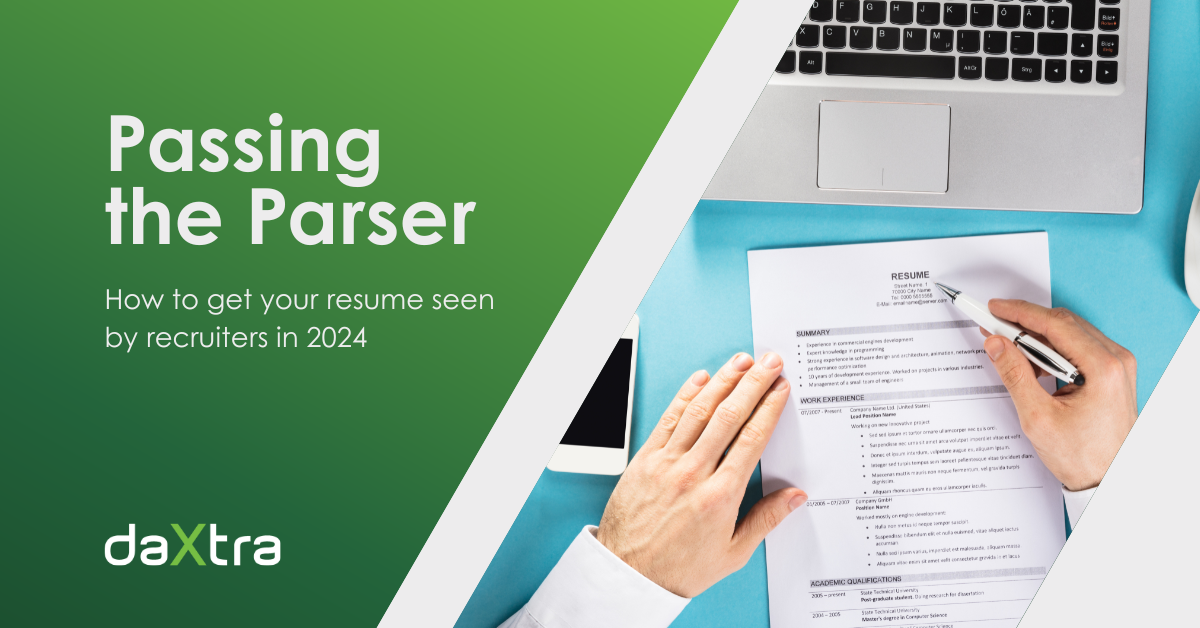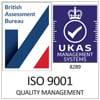Lots of factors play a role in whether your resume will stand out to hiring managers. Today, AI and resume parsing technologies pose a growing challenge for candidates: they determine if recruiters and managers will ever see your resume. Many candidates’ resumes contain poor formatting and verbose fluff that can muddy qualifications, and greatly increase the risk that a resume never lands in front of the people who would be most impressed with the skills and experience you bring to the table.
Luckily, there are easy things you can do today to ensure AI parsing systems can easily process your resume, so it can be evaluated by human recruiters almost as soon as it is submitted.
But first, to understand the steps you should take to optimize your resume, you’ll need to understand how resume parsing works.
What is a resume parser?
A resume parser has two major functions. First, a parser processes and analyzes your resume in whatever format it happens to be (DOCX, PDF, etc.) and translates it into a structured format that can be populated into the appropriate fields within an Applicant Tracking System (ATS) or Candidate Relationship Management software (CRM). These fields contain things like your name, work history and skills, and thus make your candidate record searchable for a company or staffing firm.
Second, the best parsers on the market today assess your resume at a human-readable level to understand your proficiency and experience level with various skills and tools. Importantly, they can also analyze your educational background and work history. These are crucial factors for hiring managers when deciding which candidates advance to interviews. The very best parsers now automate more of these processes by not only parsing candidate resumes and cataloging the skills contained therein, but also ranking candidates and then identifying the best matches for a given role.
Industry-leading parsers like Daxtra’s utilize artificial intelligence (AI) and large language models (LLMs) to quickly analyze the meaning of resumes on a near-human level. This means we help provide recruiters and hiring managers with information that gives a more holistic view of your very best qualifications. In turn, this can mean that you are easily and quickly identified as a leading candidate for positions for which your skills and abilities are a great fit.
How does resume parsing impact candidates?
Resumes that are not optimized for both human eyes and AI can often fall into something like a resume purgatory. That means that resumes might:
- Pass through a parser successfully, but be too poorly written to be easily understood by human or AI readers
- Have errors in formatting that prevent them from passing through a parser and require manual correction and processing. This can lead to manual correction, which is work that must be performed by a human who may or may not have time to do so each day (or even each week). In turn, that can mean a resume may not even land on a recruiter’s desk for several weeks.
By optimizing your resume for parsing, you can increase your chances that a recruiter or hiring manager will see it sooner.
How to improve your resume for parsing
Something to think about: graphic designers make smart use of white space to catch the attention of a given audience. Similarly, while resume parsers' ability to understand complex formatting and text is expanding, they most accurately read text that is direct, pointed and formatted for human reading and understanding.
By merging these principles and remembering your resume will be reviewed by both AI and humans, you'll create your strongest chance of a successful resume.
Here are some additional tips to optimize your resume for parsing:
Reduce complicated formatting
AI-enhanced resume parsers are becoming more adept at interpreting information in column formats. The same can be said regarding fonts of different sizes and types (i.e., one font type for the first letter of the first name and a different font type for the remaining letters).
However, this remains a primary challenge for some parsers, and is harder for human readers to scan. Consider your technology and human audiences. The best resume format is still a single-column design with an easy-to-read font (Aptos, Arial, Calibri, or Times New Roman, for example). This is the easiest format for humans to read and understand at a glance, and it’s the easiest for parsers to process and understand as well.
Utilize white space
It’s both tempting and understandable to want to fit as much content as possible onto your resume. After all, it’s only natural to want to detail all your accomplishments, skills, and qualifications for consideration. But don’t cram irrelevant content into your resume.
A better approach is to consider only your most valuable and relevant skills and contributions in each role you’ve held. Focus on these in a bullet format underneath each position heading. Talk pointedly about the results you’ve driven for a business utilizing each skill. And (this is important!) ensure you are directly mentioning the key skills you developed and/or used. When you focus your resume content this way, it is much easier to use appropriate document formatting (1-inch margins, 1.5 paragraph spacing) to make it easy for a human to review. Additionally, removing fluff from your writing will make it easier for an AI parser to understand the true meaning of your resume.
Be wary of photos and graphs
There are mixed opinions when it comes to photos (or other technical images) on resumes. Some people prefer to include them, others are staunchly against it. When considering whether to include a photo, you should think about your industry and your region—as norms can differ from place to place.
That said, a photo that could potentially introduce bias into your hiring process should usually be excluded from your resume altogether. Likewise, technical documentation, like graphs or charts, typically belong in a separate document. Although a parser like Daxtra’s can filter out your photo and other information, your resume is designed to succinctly communicate your skills, experience, and accomplishments that relate to the positions for which you are applying. A resume that contains a headshot, technical graphs or other images can potentially create a file size that’s too large for parsers to handle. Don’t muddy the waters: try to keep your file in a small, text-based format that’s just as easy for humans to read and understand as it is for parsers.
Don't keyword stuff
Keyword stuffing is repeating keywords for skills and qualifications on your resume over and over in the hopes that you will rank more highly in search results and skill identification. This practice doesn’t help candidates, for a few reasons:
- Advanced parsers (like Daxtra’s) easily see through this trick — even if you make the repeated keywords the same color as your background. Thus, you receive no “extra credit” for repeated skills. Daxtra’s search technology uses proprietary AI that analyzes your skills in the context of your resume — like a human would - so the number of times a keyword appears on your resume doesn’t have a large effect on your candidate ranking.
- Some systems may even penalize you for trying to game them. Keep in mind that the very best resumes are easily read and understood by humans – and thus, easily read and understood by parsers.
- Tricks like keyword stuffing can potentially cause you to appear dishonest and/or unethical to recruiters and hiring managers — and to resume parsers.
Ultimately, it’s best to let your results speak for themselves in a directly written, well-formatted resume.
Don't forget the basics
It’s important to always remember to include your name, location, contact information and other key details in your resume. Sometimes, candidates overlook these important details because they are so focused on highlighting their valuable skills and experiences. Keeping your location and contact information up to date is useful for future opportunities, as many employers create applicant profiles. They might use the location and contact information in your profile to ensure that the opportunities they send your way are relevant to you.
Once you’ve written your resume, perform a quick check to ensure you haven’t neglected these areas, as mistakes here can cause a human reader or a parser to potentially discard your resume before it is reviewed.
Next steps: optimizing your resume
With a better understanding of how both humans and technology review resumes, candidates can incorporate this knowledge into a toolkit of actionable steps. This can significantly improve your resume’s odds of standing out to both human readers as well as parsing tools. Ultimately, this means candidates can easily convey their skills to recruiters—so those recruiters can analyze your resume appropriately, get in touch with you more easily and help you find your dream job faster.



